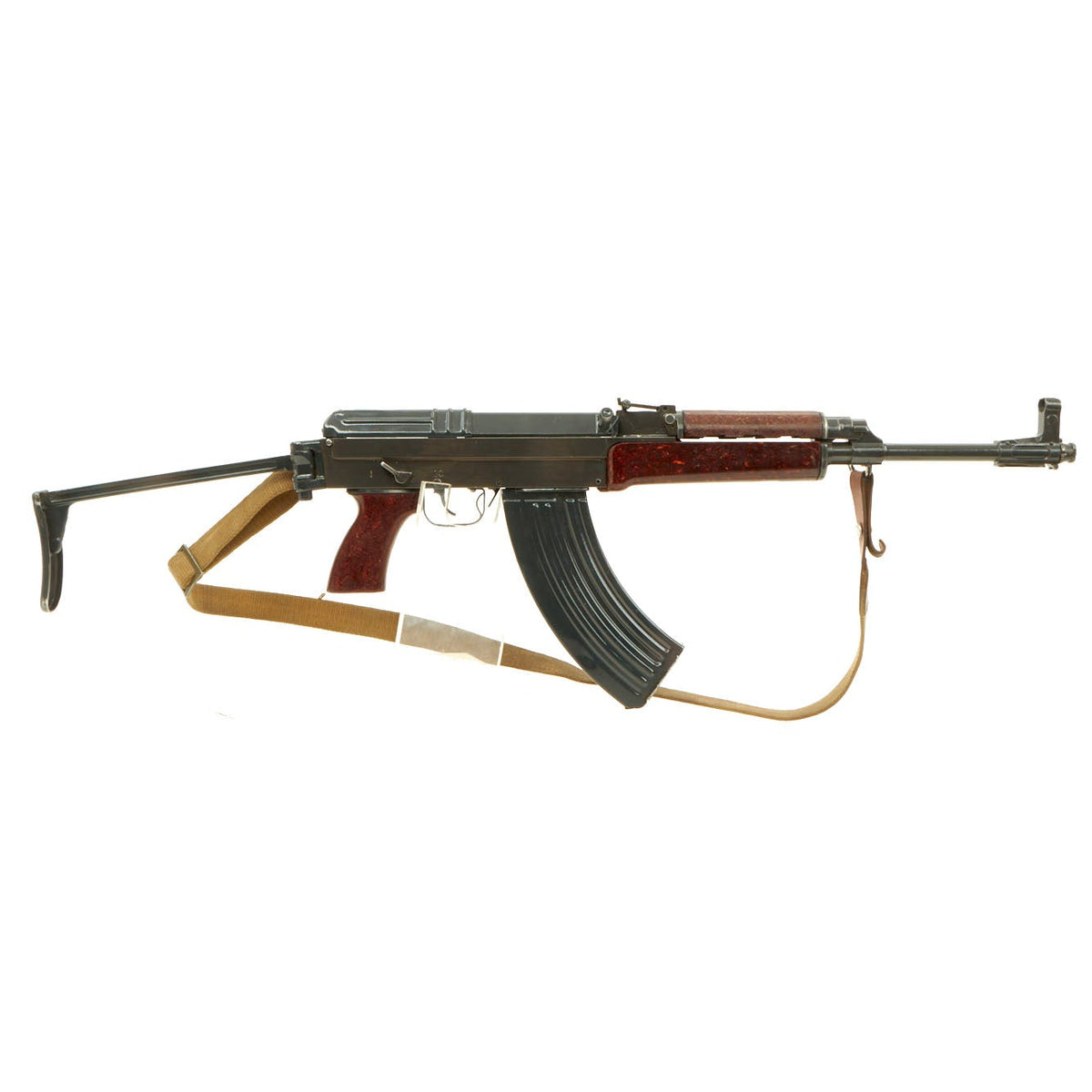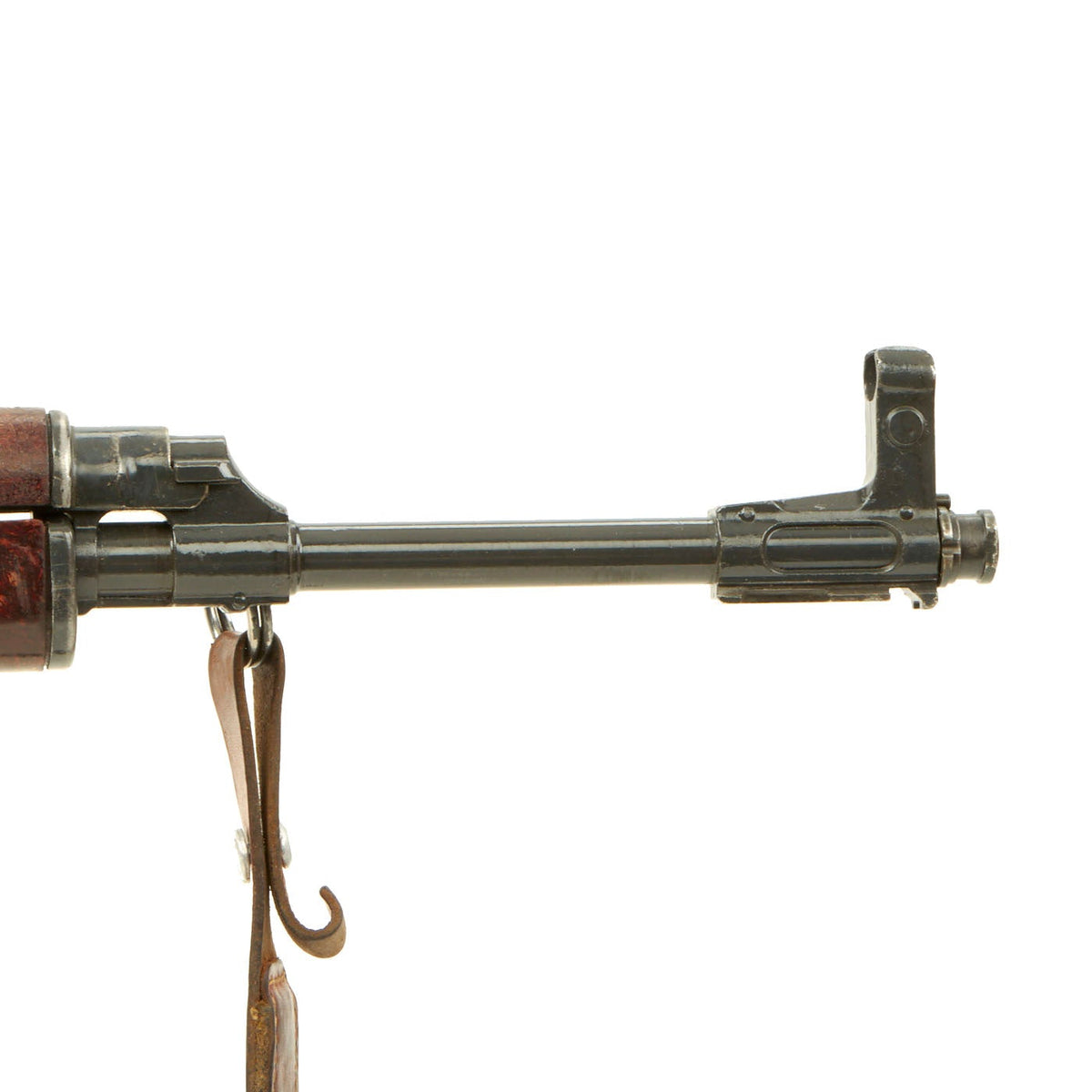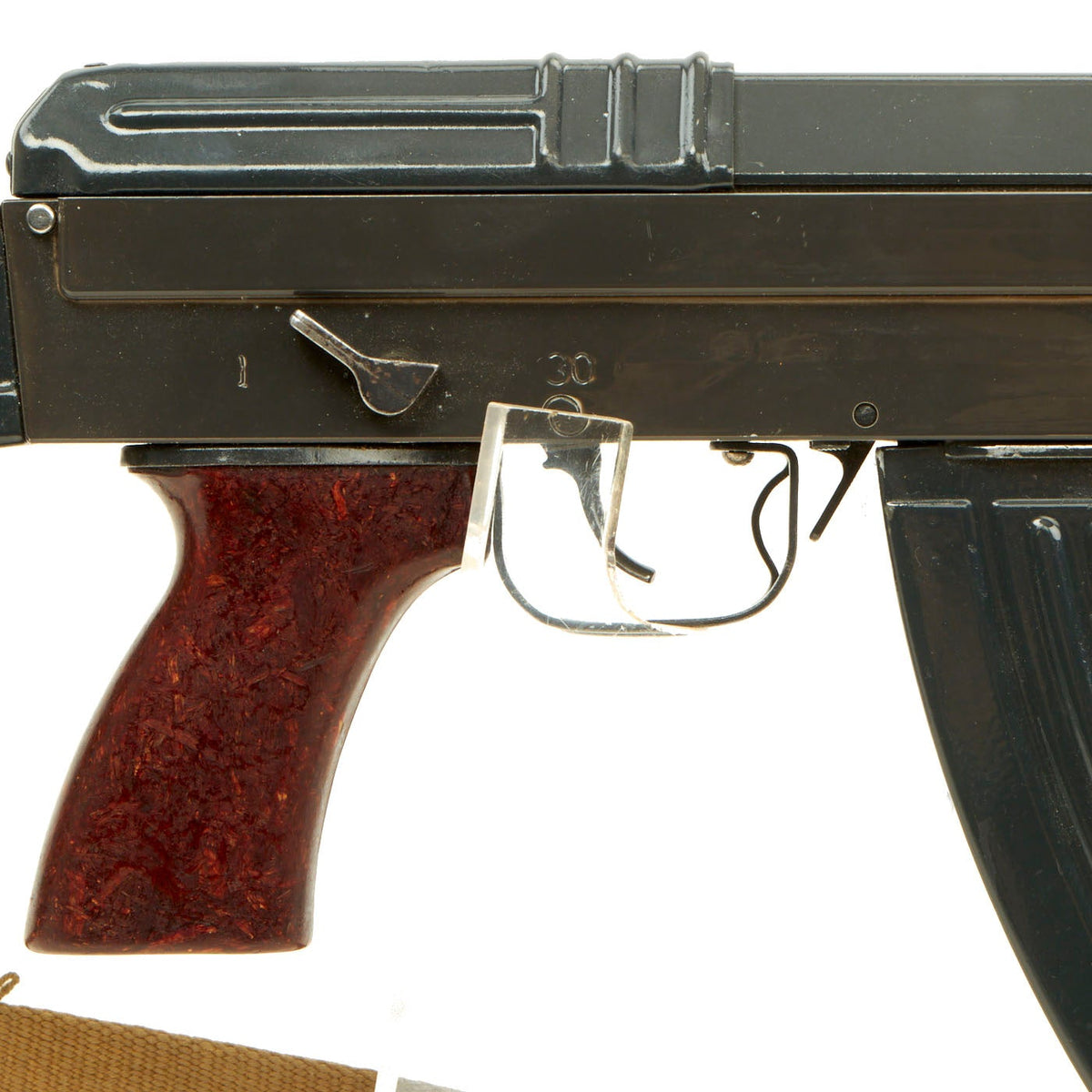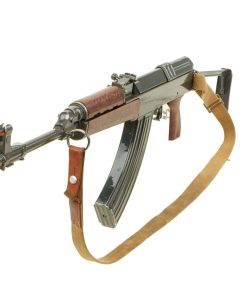Czechoslovakian Vzor 58 Výsadkový Replica Display Rifle – Vz 58 Airborne Training Rifle Original Items
$ 595,00 $ 178,50
New Made Replica Item: This Vz58 is an incredibly accurate non-firing replica constructed of metal and bakelite. The weight and feel are true to the Czech Army issue while the quality of materials and attention to detail bring this rifle to life. The functioning bolt handle even gives off a very satisfying ‘clack’ when pulled back, but there’s no audible click when the trigger is pulled. There is no better choice for re-enactors and Czech Army buffs than this Vz. Assembled with a folding shoulder stock for Military Operations on Urban Terrain (MOUT), and other urban landscape theaters of operation or vehicle-borne/airborne operations. This is a dummy rifle, even though it looks real, live ammunition cannot be loaded into it, nor can it be converted to fire live ammunition. The magazine well is completely blocked off, per manufacturer’s design. You can however insert a magazine and run mag drills like you would with any other type of magazine fed rifle, but it is impossible to chamber a live or dummy round.
This is a fantastic replica of a rather hard to find rifle. Ready for display or re-enactments!
The vz. 58 (or Sa vz. 58) is a 7.62×39mm assault rifle designed and manufactured in Czechoslovakia and accepted into service in the late 1950s as the 7,62 mm samopal vzor 58 (“7.62mm submachine gun model 1958”), replacing the vz. 52 self-loading rifle and the 7.62×25mm Tokarev Sa 24 and Sa 26 submachine guns.
While externally the vz. 58 resembles the Soviet AK-47, it is a different design based on a short-stroke gas piston. It shares no parts with Kalashnikov rifles, including the magazine.
Development of the weapon began in 1956; leading the project was chief engineer Jiří Čermák assigned to the Konstrukta Brno facility in the city of Brno. The Soviet Union had begun insisting that the Warsaw Pact forces standardize on common ammunition. As a result, the prototype, known as the “Koště” (“broom”), was designed to chamber the intermediate Soviet 7.62×39mm M43 cartridge, rather than the Czech 7.62×45mm vz. 52 round, used in both the earlier vz. 52 rifle and the vz. 52 light machine gun. The assault rifle entered service in 1958 and over a period of 25 years (until 1984), over 920,000 weapons had been produced, fielded by the armed forces of Czechoslovakia, Cuba and several Asian and African nations.
The vz. 58 was produced in three main variants: the standard vz. 58 P (Pěchotní or “infantry”) model with a fixed buttstock made of a synthetic material (wood impregnated plastic, older versions used a wooden stock), the vz. 58 V (Výsadkový—”airborne”), featuring a side-folding metal shoulder stock, folded to the right side, and the vz. 58 Pi (Pěchotní s infračerveným zaměřovačem—”infantry with infrared sight”), which is similar to the vz. 58 P but includes a receiver-mounted dovetail rail bracket (installed on the left side of the receiver) used to attach an NSP2 night sight; it also has a detachable folding bipod and an enlarged conical flash suppressor.
A successor to the vz. 58 was proposed in the 1990s; the 5.56×45mm NATO ČZ 2000 assault rifle has been suggested as a possible replacement but due to a general lack of defense funds within the Czech Republic, the program was postponed. Another recent contender is the ČZW-556 assault rifle and ČZW-762 light machine gun which both use lever-delayed blowback which has more reliable accuracy and performance over the gas operation. In 2011, the Czech army started replacing vz. 58 with CZ-805 BREN. While vz. 58 still remains the main assault rifle of the Slovak army, the Slovak army has also been eyeing CZ-805 as a possible replacement to the aging vz. 58 rifles.
Prompt Shipping and Professional Packaging
We provide a variety of shipping options due to our long-running partnerships with UPS, FedEx and DHL. Our warehouse personnel are well trained and will pack the goods according to our exact and precise specifications. Before shipping your items will be thoroughly inspected and secured. Every day, we deliver to thousands of customers in different countries. This is a sign of our determination to become the largest online retailer worldwide. Both Europe as well as the USA have warehouses and distribution centers.
Note that orders containing more than one item will be subject to a processing period that is based to the particular item.
Prior to shipping the items, our staff will carry out an exhaustive inspection of the products you ordered. Today, most orders will be delivered within 48 hours. The estimated delivery time is between 3-7 days.
Returns
The stock is constantly changing. It's not entirely managed by us since we are involved with multiple entities, including the factory and our storage. Therefore, the actual inventory could alter at any time. It is possible that you will not receive your order after the order has been made.
The period of time is 30 days. Unfortunately, if 30 days have passed since you purchased your product, we are unable to provide a refund or exchange.
The item must not be in use and must be in the original packaging. The item must be in the original packaging.
Related products
Uncategorized
Uncategorized
Band of Brothers ORIGINAL GERMAN WWII Le. F.H. 18 10.5cm ARTILLERY PIECE Original Items
Uncategorized
Uncategorized
Angolan Rebel 1970s era 60mm Inert Display Mortar from Angolan Civil War Original Items
Uncategorized
Uncategorized
Uncategorized
Uncategorized
Uncategorized
Uncategorized
Uncategorized
Australian WWII Owen MK1 Machine Carbine SMG Custom Fabricated Replica with Sling Original Items
Uncategorized
Uncategorized
Uncategorized
Armored Burgonet Helmet & Polearm from Scottish Castle Leith Hall Circa 1700 Original Items
Uncategorized
Uncategorized
Uncategorized
Uncategorized













































































